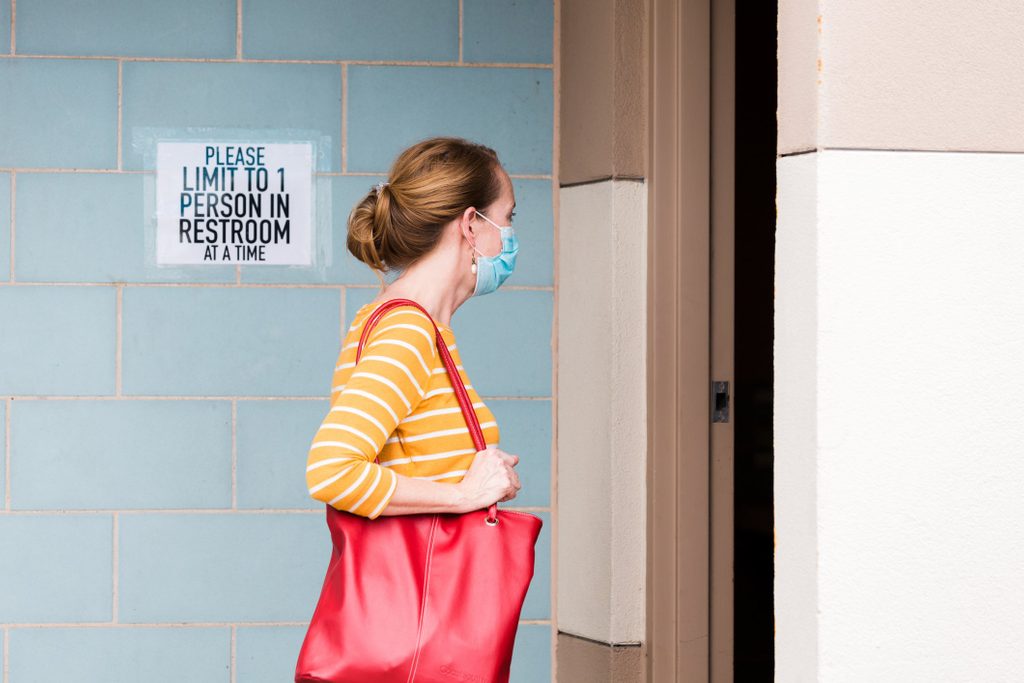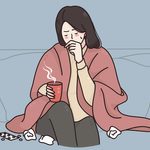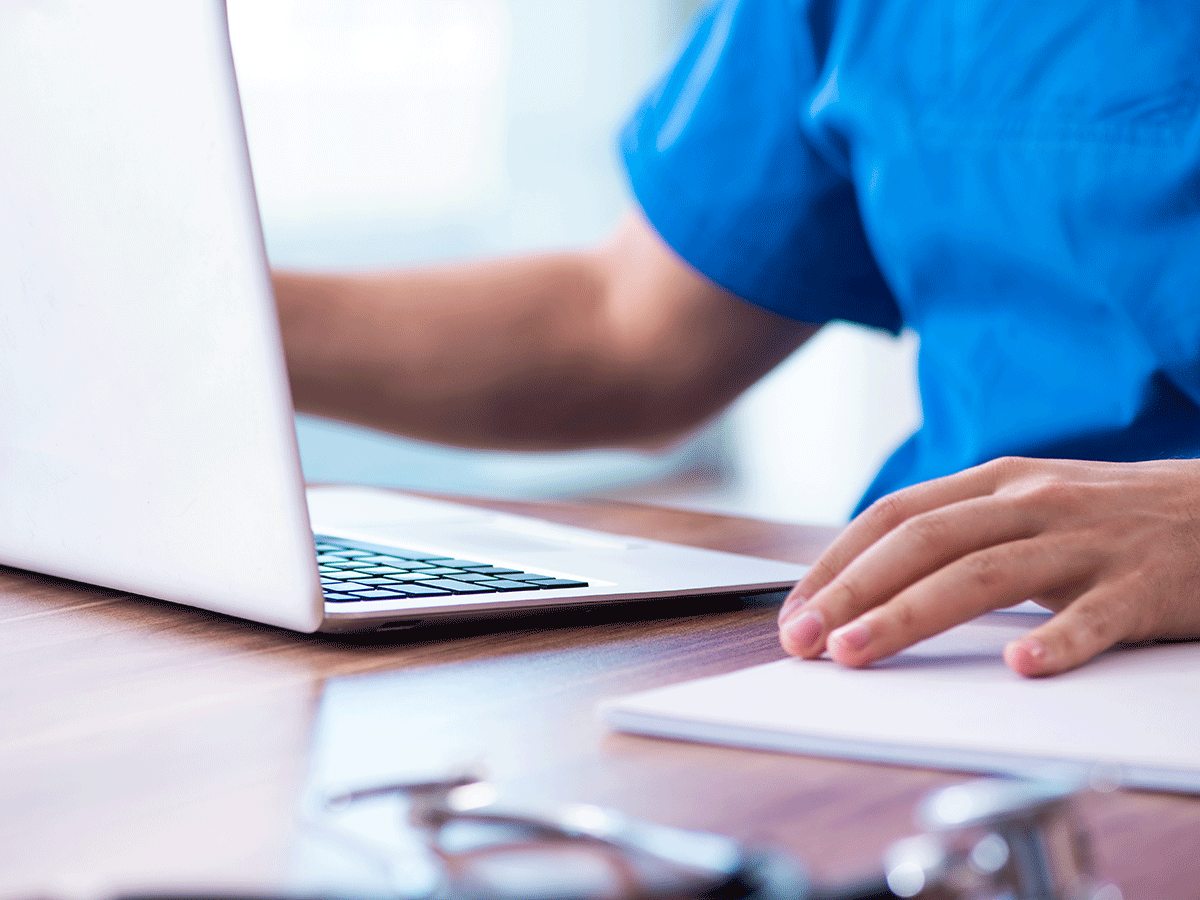9 Tips for Using a Public Restroom During Coronavirus

Have to use a public restroom during Covid-19? Follow these expert tips from wearing a face mask to drying your hands right.
As the country begins to open up again after coronavirus quarantine, we’re dealing with the additional risks of catching Covid-19 in public spaces. Covid-19 could be anywhere, but especially in germ-sharing traps like bathrooms.
So what can you do? Here are some ways to reduce your risk, even in public bathrooms.
Use the bathroom before you leave the house
If you’re heading on a short outing or errand, remember the rule from when you were a little kid: Try to go before you leave the house, even if you think you don’t have to. “When possible, it’s best to avoid using public restrooms,” says Tedra Smith, a pediatric nurse practitioner and an assistant professor of nursing at the University of Alabama at Birmingham School of Nursing. Ask all members of your family, especially small children, to use the bathroom before leaving to avoid having to make a pit stop.
The trick it so to stay hydrated, but not overindulge on liquids—that includes your morning coffee—until you reach your final destination to avoid a very full bladder.
Wear a face mask
Whether on a day-long excursion, vacation road trip, or at the office, inevitably, you will likely have to use a public restroom. The same rules for avoiding coronavirus anywhere else apply in the bathroom. Number one? “Wear a mask when using the toilet, and when using urinals in a public setting always wear your mask,” says Smith. A June 2020 study in The Lancet found that mask-wearing is very effective in preventing the spread of the Covid-19 through respiratory droplets. These droplets occur when someone coughs, sneezes, or even talks, and are the main source of Covid-19 infections, according to the Centers for Disease Control and Prevention (CDC). The Lancet study also found that eye protection, such as goggles or a face shield, may also be protective; the CDC says through the eyes may “possibly” be another means of transmission. (Here are some more tips for wearing a face mask in hot weather.)
Social distance when possible
Public restrooms are often small, but you should still make efforts to stay away from others with social distancing. “The overall goal is to maintain six feet of distance,” says Smith. So, how many people should be in the bathroom at one time? “That depends on the position of the stalls and the size of the restroom,” she explains. As with general bathroom etiquette, if possible leave a stall or urinal in between you and other bathroom goers. If the bathroom seems crowded, wait to use it. And if there’s a line, wait outside the main bathroom door if possible.
Don’t touch surfaces (or anything)
When you enter the bathroom, watch where you put your hands—and don’t touch your face: The secondary path for viral spread is through touching contaminated surfaces and then touching your mouth, nose, or eyes. “You want to avoid touching common areas and surfaces as much as possible,” says Smith. Luckily, the ick factor of public bathrooms may actually help you to remember this. “If you must use a frequently touched surface—such as when you flush the toilet or turn on the faucet to wash your hands—protect yourself by using a piece of [clean] tissue or paper towel,” she says.
The CDC doesn’t recommend wearing gloves out in public (you can still pick up the virus and pass it to yourself or others); if you do choose to wear them, you can put them on right before entering the bathroom—just avoid touching your face while they’re still on your hands. Plus, you’ll still need to wash your hands after using the bathroom.
Close the toilet lid—if there is one
Some bad news: Covid-19 can lurk in fecal matter. Some worse news: A June 2020 study published in Physics of Fluids found that toilet flushing can send Covid-19-contaminated fecal matter soaring airborne. The researchers reported that a flush generates aerosolized droplets, and 40 to 60 percent of the droplets travel beyond the height of the toilet seat; in the moments post-flush, these potentially fecal-containing aerosolized droplets can spread through the surrounding air.
While all of this is horribly unpleasant to think about, it’s important to remember researchers don’t actually know if toilet flushing increases your chances of getting Covid-19. Still, says Smith: “I recommend you avoid using a public restroom when possible as most do not have lids on the toilets.” If you’re lucky enough to find a public toilet with a lid, put it down before you flush to prevent particles from escaping. Otherwise, move away from the toilet after you flush, and remember that the particles may land on other surfaces you might touch, like the stall handle.
Wash your hands, then don’t touch anything else
We all know that person at work who doesn’t wash their hands after using the bathroom—but even if you think you’re better off skipping the sink during Covid-19, don’t. Washing your hands is another important step toward avoiding the virus, as long as you do it correctly. (Make sure you don’t commit these handwashing mistakes.) “Always thoroughly wash your hands with soap and water, then use a paper towel to completely dry your hands,” says Smith. “The paper towel can be used to turn off the faucet and open the door, then it should be properly discarded into a trash bin.” (No access to soap and water? Find out if homemade hand sanitizers are safe.)
Dry your hands right
Drying your hands also takes some planning as well—and unfortunately for the environment, paper towels may be a better choice than air dryers. Some pre-Covid-19 studies on hand dryers have shown they can disperse germs through the air. That said, there’s no evidence yet that the novel coronavirus can spread this way.
What to do? To be on the safe side, says Smith, “use paper towels to dry your hands by rubbing. The rubbing helps decrease the number of germs possibly left on your hands after washing.”
What if an air dryer is your only option? “Use it, but keep your hands motionless,” says Smith. In this case, rubbing can force germs from the air dryer into the nooks and crannies of your skin, she warns. There’s another option, Smith notes: “Keep clean paper towels or napkins in your pocket to use after drying your hands.” Just don’t dry your hands on your clothes, where the virus and germs may have taken up residence, she says. (Here’s how to clean coronavirus off your clothes when you get home.)
Do your business and leave
Because the virus may hang out in the air in small, poorly ventilated spaces like restrooms, a 2020 study in Nature suggests, it’s probably a good idea not to linger in the bathroom for that private chat with a coworker. Also, avoid using the bathroom as a hideout to scroll through your phone (it’s probably best not to use your phone in the bathroom at all—if you do, here’s how to disinfect it). The CDC notes that the time spent with an infected person matters for Covid-19 transmission. In other words, the longer you’re around the infected person, the more chance there is of getting it, says the CDC—so it’s prudent to get in and out as quickly as possible.
Talk to building management
You could have help in navigating public restrooms safely: Buildings, businesses, and public rest stops are likely to be instituting regulations for how people should safely use the bathroom, says Smith. If you feel like a public restroom you use regularly— such as at your workplace—could provide better guidance, talk to building management or your boss about the issue. “Building management should post clear signage instructing patrons to wear a mask while in the restroom,” she says. In addition, Smith notes, there should be someone controlling the traffic to the restroom, not to mention someone frequently cleaning the stalls and entire restroom.
Next, read how fitness studios will operate during Covid-19.




